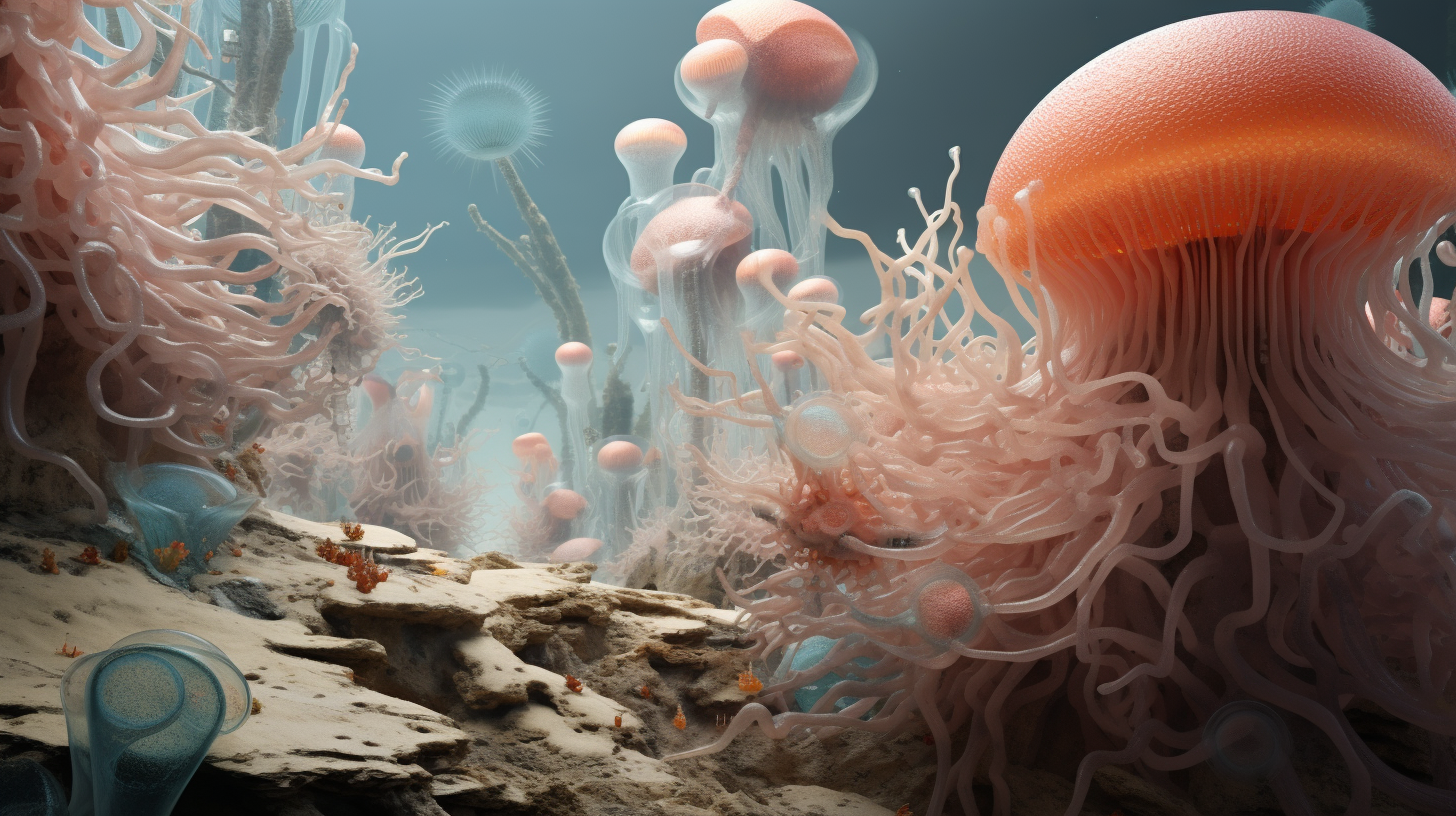Astrobiology-Based Alien Life Theories
Astrobiology-based alien life theories explore the possibility of life beyond Earth, focusing on carbon-based, water-reliant organisms. It involves examining Earth’s biosignatures, studying extremophiles, and investigating extraterrestrial environments like Mars, Europa, and exoplanets for signs of life.
- What role does the unique environment of different planets and moons play in shaping potential alien life?
- How do advancements in technology and space exploration contribute to our understanding of extraterrestrial life?
- In what ways do these astrobiology-based theories of alien life inspire new questions and explorations in the field?
Astrobiology’s reach has expanded, thanks to cutting-edge tech and interdisciplinary collaboration, enhancing our ability to decode the universe’s secrets. We’re now better equipped than ever to identify the faint whispers of life across the cosmos, even if it’s unlike anything we’ve known before.
What is Astrobiology?
Astrobiology is an interdisciplinary field that explores the potential for life to exist beyond Earth and seeks to understand the origins of life in the universe. This area of study draws upon a variety of scientific disciplines, including astronomy, biology, geology, and chemistry, to determine where and how life might exist elsewhere.
We use Earth as a model because our planet is the only known example of life. From this standpoint, astrobiologists look for carbon-based lifeforms that require water for their metabolic processes, similar to organisms on our own planet.
Goals and Objectives of Astrobiology
Our quest encompasses a spectrum of goals, leading to a holistic grasp of life’s potential in the cosmos. The primary scientific pursuits in astrobiology involve:
- Understanding the Origins: We’re deeply interested in how life began on Earth and, by extension, how it could originate elsewhere. This includes studies of prebiotic chemistry and molecular evolution.
- Detecting Biosignatures: A critical objective is to detect biosignatures, distinctive signs that could indicate the presence of past or present life on other planets or moons. This involves analyzing geological and atmospheric data from extraterrestrial environments.
- Biological Potential: We seek to assess the biological potential of various celestial bodies within our Solar System and beyond. Mars, Europa, Titan, and Enceladus are prime targets due to their potentially hospitable conditions.
- Investigating Extremophiles: Life on Earth found in extreme environments provides clues as to what conditions life might withstand elsewhere. Extremophiles are studied to model the resilience of life in harsh extraterrestrial climates.
Significantly, these objectives also direct current and future space missions, which aim to gather data pertinent to astrobiological research. Through these missions, we’re developing comprehensive exploration strategies with the hope of answering the landmark question: Are we alone in the universe?
The Search for Extraterrestrial Life
Microbial Life
Our search is rooted in the expectation that microbial life is the most prolific form throughout the cosmos. Microbes are the oldest form of life on Earth, with a history that dwarfs the age of multicellular organisms. Considering the vast unknown biodiversity on our own planet and the resilience of microorganisms, it’s reasonable to speculate that microbes may be the common denominator of life in the universe.
Read more on microbial alien life
Extremophiles
Examination of life on Earth reveals organisms with extraordinary survival abilities—extremophiles. These creatures thrive in environments previously deemed inhospitable, from the boiling hydrothermal vents of the ocean floor to the icy brines of polar ice caps. Studying these life forms offers insights into the types of extraterrestrial environments where life might persist Even though challenging conditions.
Learn more about the hunt for alien extremophiles
Subsurface Life
Beneath our feet lies a massive, largely unexplored frontier where life exists in the absence of sunlight. Subsurface alien life, deriving its energy from chemical reactions rather than photosynthesis, implies that celestial bodies lacking an Earth-like atmosphere could still harbor life beneath their crusts.
Discover subsurface alien life
Complex Life
The search for complex alien life forms, beyond simple microbial life, involves investigating environments where energy sources and stable conditions might support a higher level of biological complexity. The discovery of complex extraterrestrial life would have profound implications, not only confirming that life can develop independently but also offering new perspectives on evolution and biology.
See more on complex alien life forms
Ocean Worlds
We’ve identified ocean alien worlds in our solar system, such as Europa and Enceladus, with subsurface oceans that could provide the necessary conditions for life. These moons exhibit geothermal activity, which could supply the energy needed for life, and possess water—essential for all known life forms.
Learn about ocean alien worlds
Earth Like Planets
Finally, our telescopes focus on distant exoplanets within the habitable zone of their stars—regions where conditions might be just right for liquid water, a critical component for life as we know it. The study of these Earth-like planets increases our chances of finding life, while also expanding our understanding of planetary systems and habitability.
Read more on Earth-like planets
Conclusion
We’ve traversed the fascinating landscape of astrobiology and its quest to uncover life beyond our planet. The journey has shown us that life, especially in microbial form, may not be unique to Earth. Our understanding of extremophiles has expanded the possibilities of life in environments once deemed inhospitable. As we turn our gaze to ocean worlds and Earth-like planets, our search becomes more targeted, more hopeful. The universe is vast and our search for life is just beginning. With each discovery, we’re reminded of the incredible potential for life to adapt and thrive in the cosmos.





